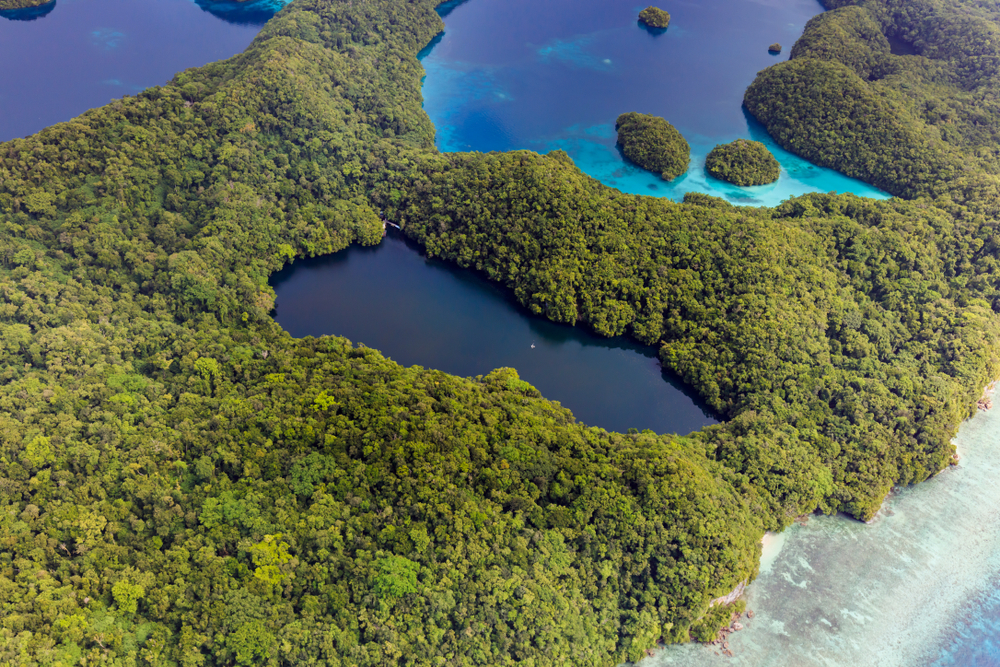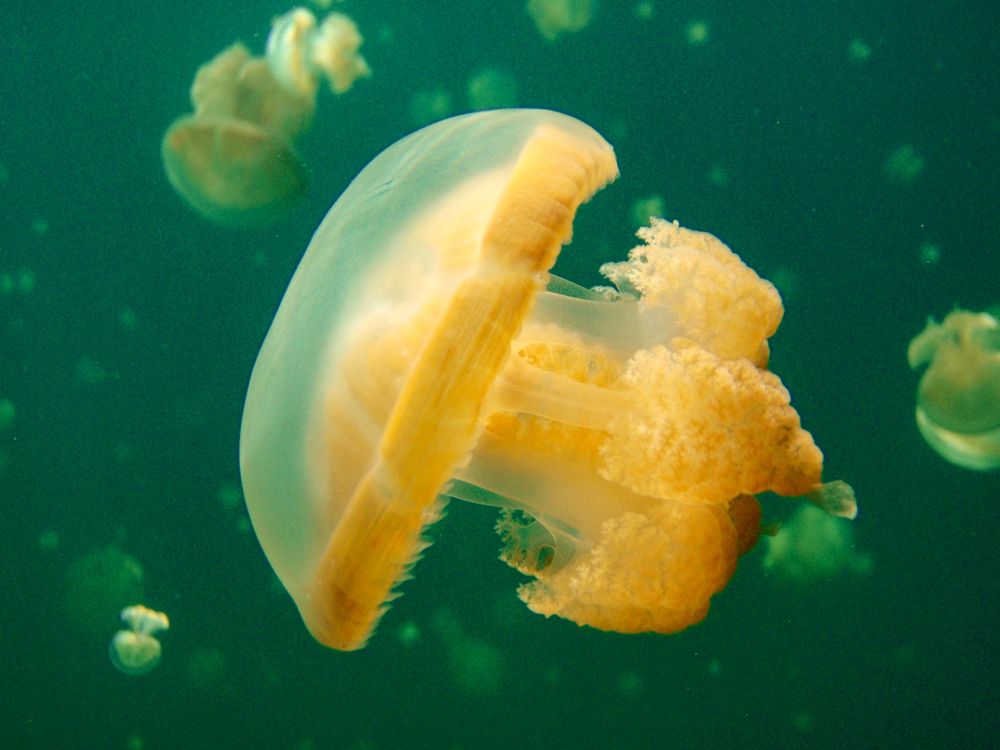On an uninhabited island in the Pacific, there lies a lake chock-full of millions of unique jellyfish that can’t be found anywhere else on Earth. Inventively named Jellyfish Lake, this bizarre body of water is largely cut off from the rest of the world, allowing its inhabitants to evolve some remarkable traits.
Jellyfish Lake is located on Eil Malk island, one of the hundreds of islands that make up the Rock Islands in Palau. It measures just 400 meters (1,312 feet) long and 30 meters (98 feet) deep, according to Coral Reef Research Foundation, but its waters are absolutely brimming with life.
The lake is famous for its unique subspecies known as the golden jelly (Mastigias papua etpisoni), named in homage to the former President of Palau, Ngiratkel Etpison. Along with this star of the show, the lake is home to moon jellyfish (Aurelia aurita) which are found elsewhere in the world.
At its peak, millions of jellyfish can inhabit the lake. It’s believed that the lake is around 12,000 years old, and when sea levels shrunk thousands of years ago, trapping the jellyfish.
It is connected to the sea, but only through narrow fissures and underwater tunnels in the limestone of an ancient reef. This is enough to be impacted by the ocean’s tides, which slightly raise and decrease the lake’s waters throughout the day.

Jellyfish lake seen from the skies.
Image credit: Norimoto/Shutterstock.com
The stunning golden jellyfish spends its days swimming horizontally near the surface, before traveling to the nutrient-rich deeper layers at night. Given the lack of threats within the lake, the golden jellyfish sting has grown weak and barely causes a tingle on human skin.
Their jelly tissues are loaded with zooxanthellae, microscopic symbiotic algae. By soaking up the sun’s rays during the day, the algae carry out photosynthesis and provide the jellyfish with organic compounds they can use. In turn, the single-celled algae are provided with a safe home that’s constantly on the move, ensuring enough sunlight
Another strange feature of the lake is its layers. Around 15 meters (49 feet) below its surface, there is a layer of pink bacteria, below which there is no light or oxygen. The bottom portion of water is highly toxic due to high levels of dissolved hydrogen sulfide gas that remains trapped.
Tourists are allowed to visit the lake and even snorkel in it. However, deeper dives are restricted out of fears they might disrupt the delicate ecosystem, as well as the risk posed by its toxic depths.

A closer look at the lake’s unique subspecies known as the golden jelly (Mastigias papua etpisoni),
Image credit: evenfh/Shutterstock.com
Despite its isolation, the lake is not immune from wider global problems. In 1998, a catastrophic collapse in jellyfish numbers was reported at the lake, culminating in there being no reported individuals by the end of the year. It’s thought the decline was thought to be associated with a substantial increase in temperature, initiated by the El Niño conditions of 1997–98.
In January 2000, golden jellyfish were spotted in the lake again, eventually bouncing back to By pre-decline numbers by May 2012.
While their renaissance has been welcomed, the years of decline show that this fragile ecosystem is extremely vulnerable to climate change.
Source Link: Jellyfish Lake, Home To Millions Of Unique Jellyfish, Is Like Nowhere Else